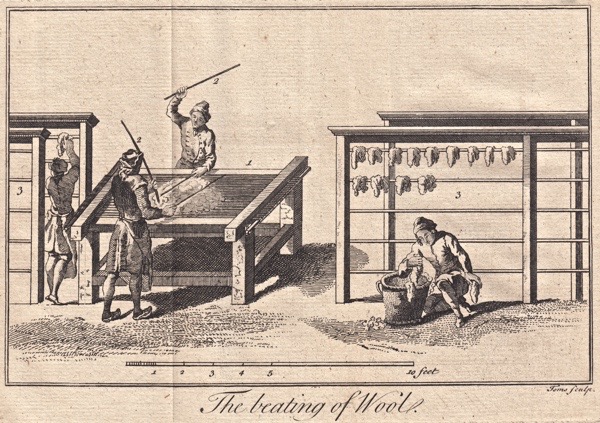The Principal Operations Of Weaving, 1748
These copperplate engravings illustrate The Principal Operations of Weaving reproduced from a book of 1748 in the collection at Dennis Severs House. Many of these activities would have been a familiar sight in Spitalfields three centuries ago.







Ribbon Weaving











Dennis Severs House, 18 Folgate House, Spitalfields, E1
Click here to learn more about the HUGUENOT SUMMER festival
You make also like to read about















Fascinating engravings. It is interesting to see – at least from these engravings – that there was skilled work for women.
Having had a trying day I think I would quite enjoy a bit of beating of the wool myself at this moment!! Seriously though this is another very interesting insight into history so many thanks once again GA.
Pauline.
Many thanks for this one – it gives a good insight into the work that my Holford ancestors were doing at that time in Spitalfields. With my wife coming from a woollen area it’s interesting to see the similarities and the differences in technology – mostly similarities!
In the illustration “wool loom”, is the word loom the more generic use, “tool”? Because I call that setup a creel, to the right, with many bobbins or spools of thread; and the threads being fed onto a warping reel at the center. The warping reel to the left is empty, to better show the internal structure. I had a horizontal warping reel, turned by an electric motor. The creel was made by my Dad, and held 120 cones of thread. I could make 6″ of warp at a time, then move everything over a bit and make another 6″.
That was 6″ wide and 200 yards long.
Gentle Author, I’m fascinated by your engraving, The Shear-man’s Work. One of my ancestors, John Cooper, born in 1691 at Sheffield, was apprenticed to and became a shearsmith. I’d guessed shears were made for shearing sheep, but from the picture they were huge things used to clip loose threads off newly woven woolen cloth. Can you tell me if there shears in a London museum? I’d love to see a pair. Your pictures bring the past to life. Thank you!